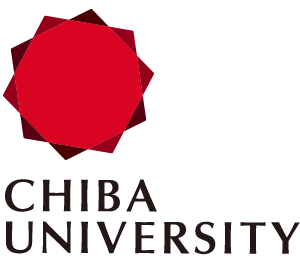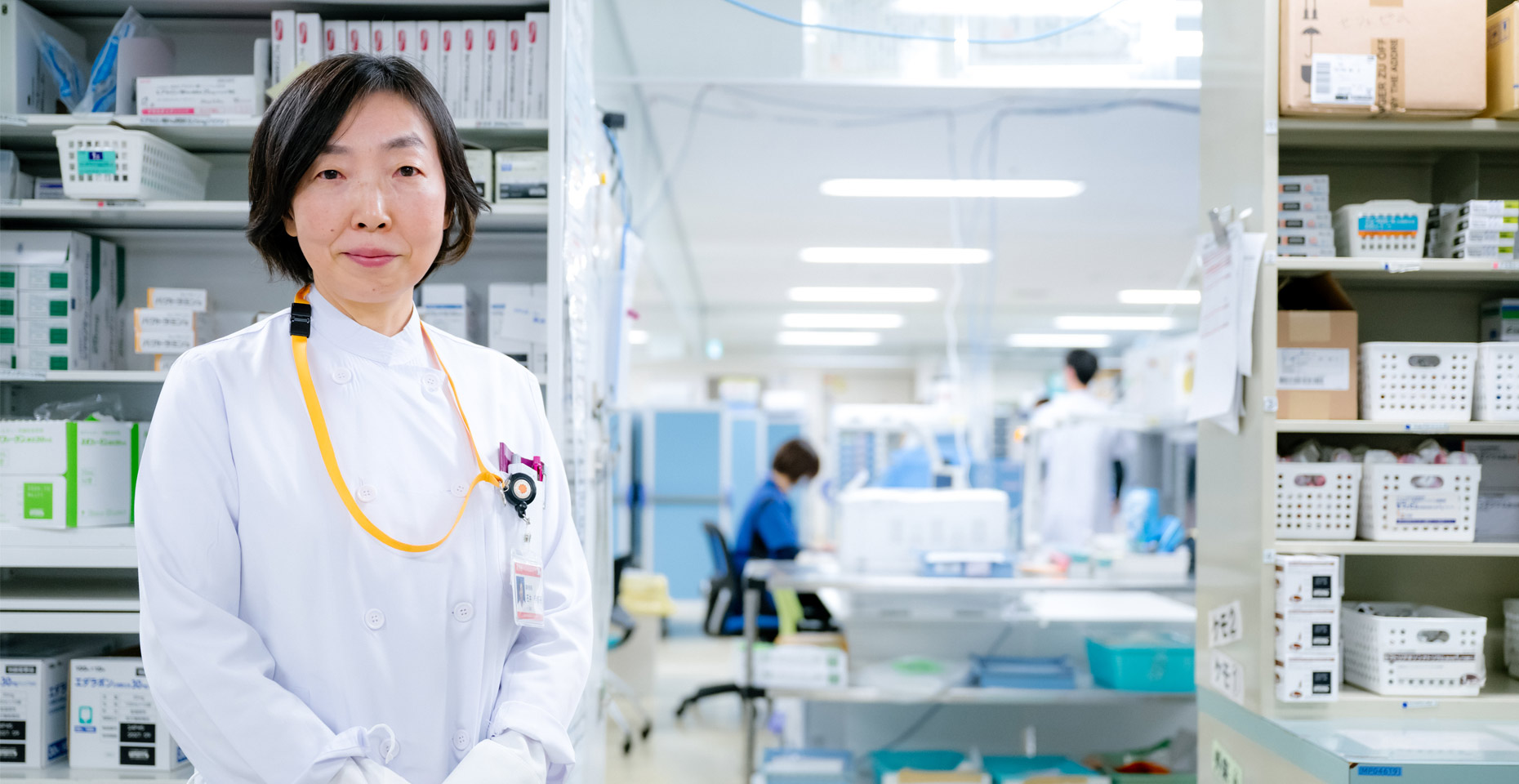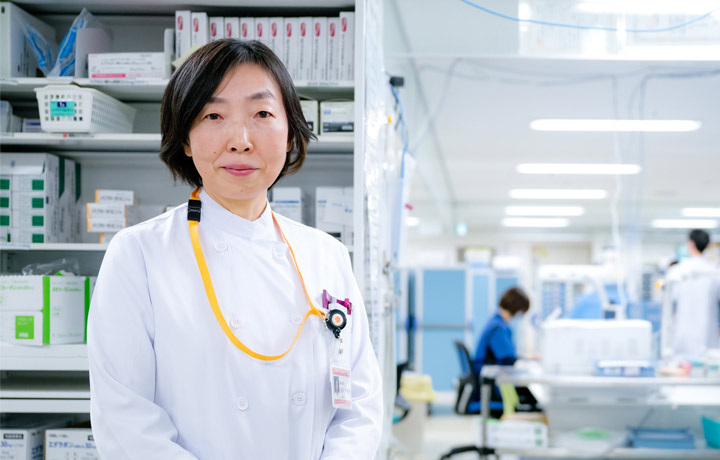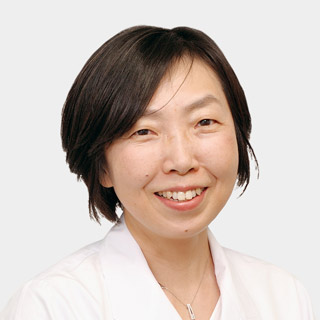She never hesitates.
Professor Itsuko Ishii, Chair of the Pharmacy Division at Chiba University Hospital, has long pioneered the work and status of hospital pharmacists. Always attentive to challenges in the clinical field and committed to addressing them, Professor Ishii was appointed this spring as President of the Pharmaceutical Society of Japan, founded in 1880. Her appointment marks a historic milestone: she is not only the first woman to serve as president in the Society’s 145-year history, but also the first hospital pharmacist to hold this position. We spoke with Professor Ishii about her journey to this point, the issues she intends to tackle as president, and her hopes for those aspiring to a career in pharmacy.
Patients are the best teachers
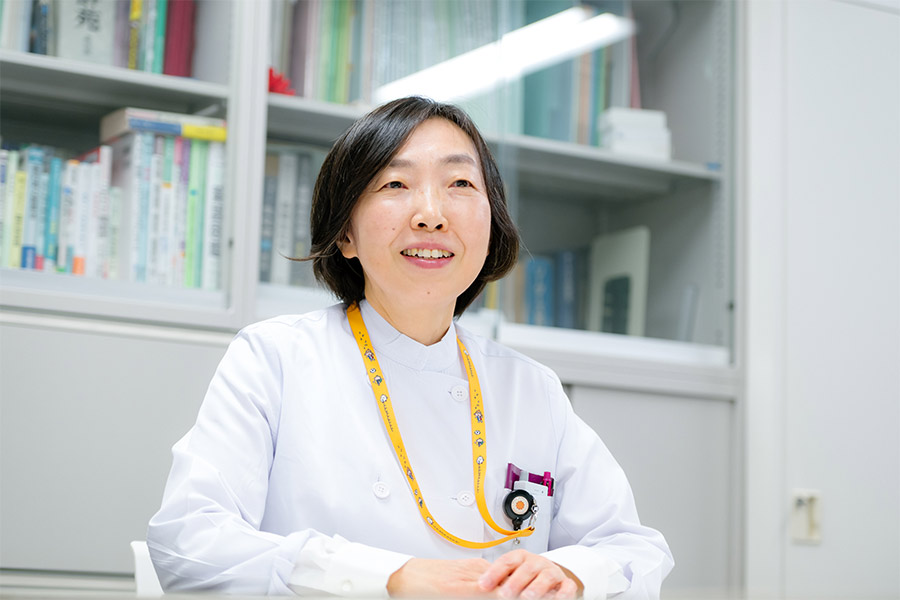
Two days that defined my life
She grew up in Oami, Chiba Prefecture, home to Kujukuri Beach, surrounded by nature. She observed animals and pored over illustrated books, at one point even dreaming of becoming a dinosaur scientist. Mathematics and science came to her effortlessly, but when reading a story, she struggled to understand the feelings of its characters. At a young age, she realized she was destined for the sciences.
With the practical mindset of ‘acquiring a trade,’ she entered the Faculty of Pharmaceutical Sciences at Chiba University, where she discovered the fascination of biochemistry. At that time, however, her true priority was skiing. As a member of the university ski team, she spent her days fully engaged—racing down snowy slopes in between working on her graduation thesis and preparing for the National Pharmacist Examination.
Yet just before submitting her thesis, her life took a decisive turn. Her supervisor, the late Professor Seiyu Hirose, suddenly asked her if she would consider joining the university as a teaching staff member. The catch was that she had to give her answer by the very next day.
Having originally planned to pursue graduate studies, she was bewildered by the unexpected offer. But with her thesis deadline looming, she had no time to waver. Early the next morning, she gave her acceptance. From that moment on, the path of a university professor became her life’s course.
The importance of seeing patients at the bedside was learned through collaborative research
When I began my career as a teaching staff member of Chiba University, something always troubled me: pharmaceutical companies would seek advice from the Faculty of Medicine, not the Faculty of Pharmaceutical Sciences. I wanted to understand what kind of research was being carried out there and what perspective pharmaceutical companies were approaching their inquiries. Before long, I began to feel that I, too, wanted to receive guidance directly from the Faculty of Medicine.

After consulting with Dr. Yasushi Saito1, then a lecturer in the Department 2 of Internal Medicine2 at the Faculty of Medicine, a joint research project on the mechanism of arteriosclerosis was launched. This gave me the opportunity to conduct research together with Dr. Kotaro Yokote, now the president of Chiba University. Around the time Japan’s first anti-cholesterol drug was released, I was able to obtain valuable patient data on those who had been administered the drug. Through this experience, I came to realize that blood vessels themselves were a fascinating subject of study.
* 1: Later became the 13th President of Chiba University
* 2: Specializes in lipid metabolism, hematology, allergies, and collagen diseases
In arteriosclerosis, smooth muscle cells proliferate to protect the vessels, causing the vessels themselves to thicken. Normally, cell proliferation is expected to lead to cancer, yet in blood vessels, such malignant transformation is rare. I was deeply intrigued by the possibility that some remarkable mechanism might be at work—one that ensures the continuous flow of blood, essential for sustaining life. I also began to think that if I could elucidate the properties of these cells that resist malignancy, I might be able to gain insight into the mechanisms of cancer itself.
Her experience with collaborative research profoundly transformed her view of patients. In pharmacy, the word ‘patient’ often refers to ‘a standard or model case,‘ whereas in medicine, it means each unique individual. Among medical staff, the idea that ‘one must observe patients closely’ was widely embraced, and the phrase ‘for the patient’s sake’ had even become a familiar expression. This contrast prompted her to reflect deeply.
Her mentor, Professor Hirose, also emphasized that ‘pharmacy students should grow by observing patients.’ He was the one who proposed relocating the Faculty of Pharmacy—then based on the Nishi-Chiba Campus—to the Inohana Campus, alongside the Faculty of Medicine and its affiliated hospital. Ishii, as his student, would eventually embody his words.
Surrounded by colleagues who believed that ‘patients are the best teachers,’ I came to focus intently on each individual patient. This perspective became the driving force to advance the individualization of medical care.
If necessary, I will spare no effort.
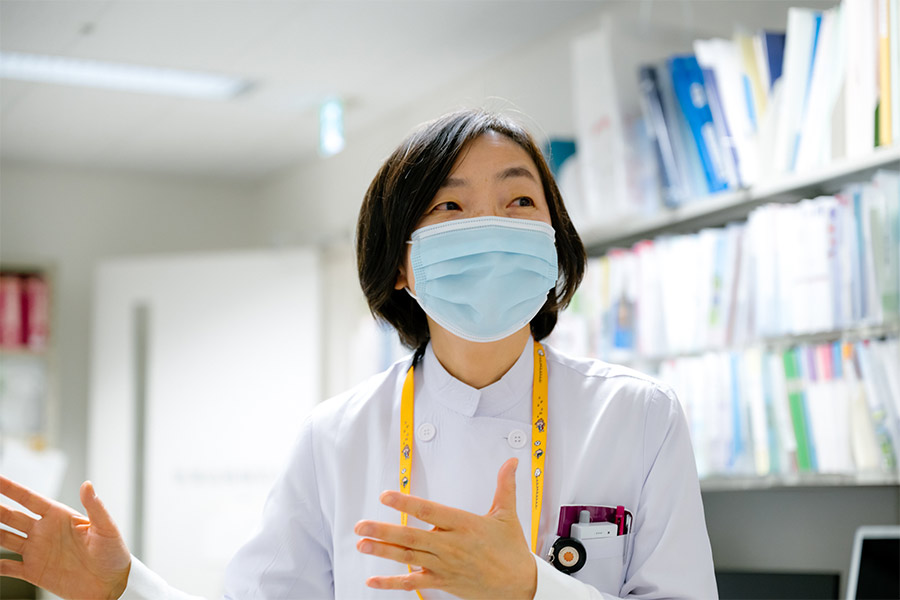
One of the most important responsibilities of a pharmacist is to check prescriptions issued by doctors. In addition to basic matters such as dosage and administration, allergies, drug interactions, and contraindications, pharmacists must also determine whether the dosage is appropriate for each patient’s health condition. For example, if a patient’s kidney function is impaired, the dosage of certain medications must be reduced. Yet with more than 20,000 drugs already on the market—and that number steadily increasing—the limits of such work were becoming evident.
To address this issue, she discussed and developed the ‘Drug-Specific Test Value Database’ with her colleagues late into the night. The system integrates clinical test values into prescriptions, enabling doctors to instantly identify which values fall outside the standard range for the prescribed drugs.
Just by checking the prescribed drugs, we can decide “This drug cannot be administered because the patient’s kidney function has declined,” or “The dosage needs to be reduced.” Even early-career pharmacists with little experience in the field can now recognize such risks. In this way, we have created countless ‘clean hits’ that prevent contraindications, side effects, and overdosing. As a result, doctors have gradually come to place greater trust in pharmacists.
We started to use the system initially for in-hospital prescriptions, and as the results improved, study sessions were held and the system was gradually expanded to outpatient prescriptions. The outpatient pharmacy staff expressed their gratitude, saying, “You’ve really gone to great lengths.” This was because, with outpatient prescriptions, the pharmacist who received prescriptions often lacked access to patients’ clinical test values.
The system enabled them to identify patients who continued taking the same medication without realizing that their condition was gradually worsening, potentially putting them at risk. By integrating clinical data into prescriptions, evidence to prevent medical accidents is shared between the hospital and outpatient pharmacies, creating a system that helps protect patients.
They are now taking the system a step further, collecting data to establish optimal dosing for rare diseases, severe cases, and patients with multiple comorbidities.
University hospitals have specialists in rare cases and rare diseases. I continue to strive in research that only a pharmacist at a university hospital can carry out.
Working with diverse professions as Pharmacy Professionals
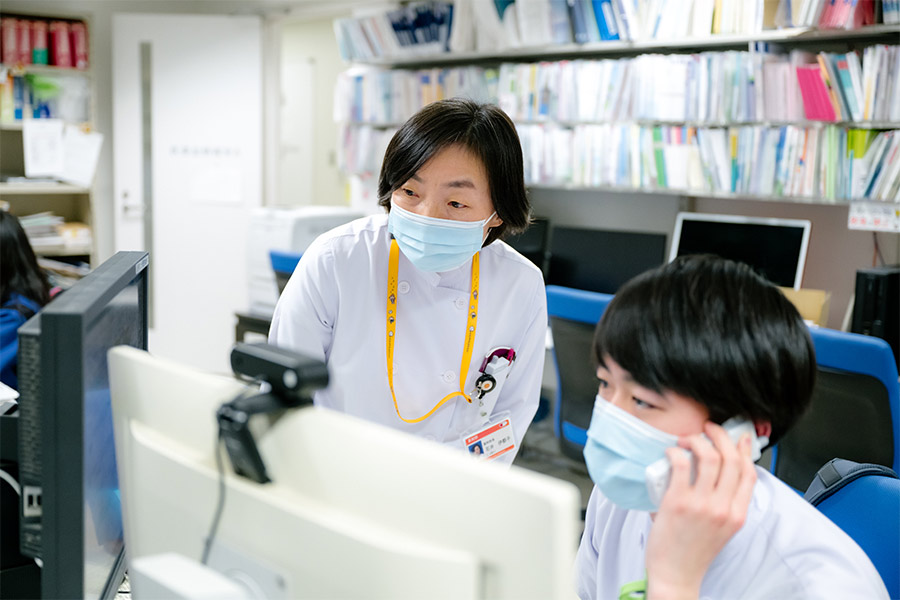
Chiba University has been implementing Interprofessional Education (IPE), a program that brings together medicine, nursing, and pharmacy to teach patient-centered healthcare. Ishii played a central role in launching IPE as the representative of the Faculty of Pharmacy.
The core principle of IPE is equality: doctors, nurses, and pharmacists each contribute their expertise, with leadership shifting to whoever is best suited for the task. At the time, however, the reality was far from ideal. Differing positions and opinions often clashed, leading to heated debates during IPE preparatory meetings.
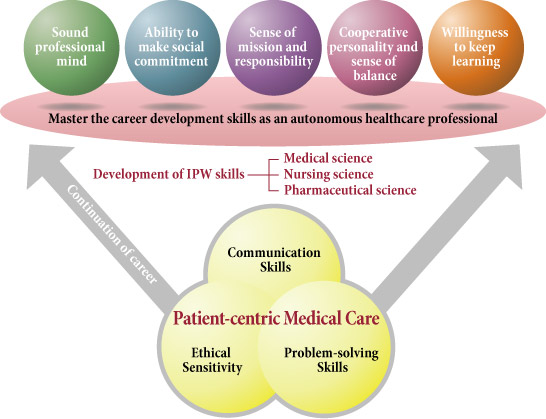
In medicine, doctors are typically seen as the central figures in diagnosis and treatment, with other professionals following their lead. Pharmacists, however, are legally required to review and audit doctors’ prescriptions independently. Persistent discussions were necessary to build the ideal working relationship.
The meetings reached numerous deadlocks, and launching the program within a year seemed impossible. Still, the organizers passed on with the determination: “Once we’ve decided to do it, no choice but to make it happen.” Thanks to their perseverance, IPE successfully began the following year. Since then, the quality of team-based care has steadily improved, and IPE has continued for 18 years.
The impact on the hospital atmosphere has been dramatic. Professor Ishii still remembers the words of a long-serving pharmacist: “These days, doctors come up to me and say things like, ‘Thank you,’ or ‘Could you teach me?’ Things really have changed.”
As mutual respect among healthcare professionals has deepened, the role of pharmacists has become increasingly recognized. With the arrival of innovative medicines such as mRNA vaccines and gene-based therapies, there is a growing need for pharmacists who can immediately understand the mechanisms behind these drugs.
Future pharmacists must also be able to understand these mechanisms. Students are expected to graduate with the skills to critically evaluate information provided by pharmaceutical companies. Strong fundamental skills are essential for confidently assessing mechanisms of action, pharmacokinetics, and clinical trial data, and for explaining them clearly to doctors and nurses when needed.
The Faculty of Pharmacy pursues two major missions: to generate new research initiatives and develop skilled professionals. When asked what makes a good pharmacist, she answers simply: “Someone who can think for themselves.”
Even patients with the same diagnosis can differ greatly in medical condition, history, family environment, and personal circumstances. Responding to this diversity requires pharmacists to observe carefully, ask questions, and think independently in order to propose multiple treatment options. The ultimate goal is personalized medicine—allowing patients to choose their own treatment—which brings both patient happiness and professional fulfillment.
For early-career pharmacists with little experience, options may initially seem few. However, by consulting with senior colleagues, reflecting on each case, and gradually finding their own solutions, they develop the ability to think independently.
First hospital pharmacist to serve as president of the Pharmaceutical Society of Japan
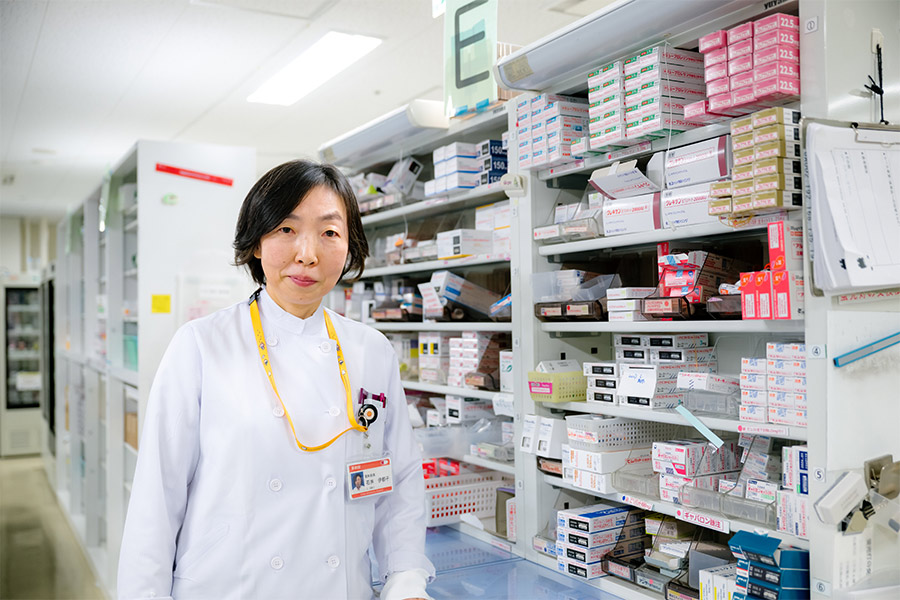
In April 2025, she became the first female—and the first hospital pharmacist—to assume the position of president of the Pharmaceutical Society of Japan. As president, she expressed her determination to address the issue of medical costs and to promote the development of new drugs.
I believe the time has come to fundamentally rethink the national health insurance system, which is facing a crisis. I want to rebuild it now and establish a system that will save every life that can be saved. I also want to invigorate Japan’s drug discovery landscape. It doesn’t have to be an expensive, blockbuster drug—what truly matters is developing medicines that can save lives and ensuring they reach the patients who need them,” she said.
“I want to save every life that can be saved,” she added with a bright smile, before heading off swiftly to the ward.
She protects her patients—and inspires pharmacists along the way.

● ● Off Topic ● ●
What do you do to relax?
I spend all day in the hospital basement, where the pharmacist ward is, during the week. So on weekends, I make sure to get plenty of sunshine working in the fields.
Harvesting fresh, delicious vegetables is very rewarding.
That sounds like a wonderful way to recharge, surrounded by nature!
The weeds grow incredibly fast, and there are plenty of moles and snakes in the fields.
But experiencing such raw, overwhelming vitality is a lot of fun.
Recommend
-

Children-centered support and school operations: On the occasion of the founding of the Children and Families Agency
2023.02.15
-

Let Community-Based Disaster Reconstruction take roots
2022.12.20
-
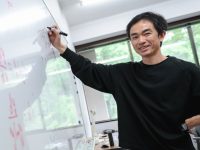
Charting a New World Atlas of Mathematics and Geometry: Transforming Differential Equations into Figures
2025.03.19
